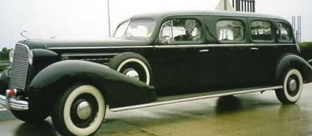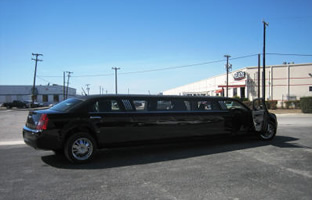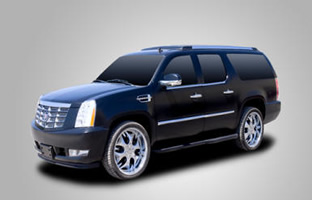The Lemovices were a Gallic tribe who established themselves in the Massif Central area including Haute-vienne, Creuse, Corréze and Charente territories in France. Their capital was Durotincum (Villejoubert). Lemovices means "conquerors with the elm". The Lemovices gave their name to Limoge and to the province of Limousin.
Famous products of the province of Limousin such as the Aubusson tapestries, enamels and porcelains are made in the capital city of Haute-Vienne, Limoges.
A part from these products, Limousin beef cattle have been raised here for many years and, the shepherds who began the tradition of raising this special breed of cattle in Europe wore a long cloak associated with today�s lavish means of transport called LIMOUSINE.
The shepherds used the cloaks to protect themselves from the rain and from the cold. Limousine is the feminine adjective of the masculine form limousin. These 2 adjectives describe the origin of a person or of a product.
example:- Un berger limousin (masculine noun and masculine adjective)
- Une bergére limousine (feminine noun and feminine adjective)
The concept of having chauffeur-driven vehicles dates back to the era of horse drawn carriages in the 1700s. The carriages were overstated with gold and they were drawn by the best looking animals. This service was anticipated for the wealthy.
In the 1900, some of the first engine powered carriages were designed with two compartments. The chauffeur had a covered compartment outside the carriage and the other compartment, also covered, was for the passengers.
The driver and the passengers were separated by a partition which had a sliding sound proof glass that allowed the passengers to keep their conversation private. If they needed to communicate with the driver, they would slide open the glass or use an intercom.
In many of the modern limousines, the partition still exists and the sliding sound proof glass, if not completely eliminated, has become part of the frame that secures and protects a flat screen TV, an indispensable amenity in today's way of life, travel, entertainment and work.
The picture below is that of an early idea that gave birth to what we now know as stretch and non stretch limousines: This is a 1908 Studebaker Limousine. limousine. This limousine had an open driver's compartment for the chauffeur and a closed cabin for the passengers, as typical in Edwardian limousines.



Hudson Super 6 Limousine with partition and sound proof sliding glass.

Here is a 1931, 7 passenger limousine.
The first stretch limousine was built in Arkansas in the late 1920s. They were used to transport big band leaders, their bands and their equipment. People called them Big Band Busses.

An early stretch limousine, a Cadillac Super Stretch
These sumptuous vehicles used to be limited to the rich, the famous and to the government.
Now, they are accessible to all including teenagers who are choosing to travel in style to their numerous scholastic, athletic, social events and summer camps.
Many industries that provide luxury means of transportation use them to generate business for their trade. The limousine industry is in its infancy in many parts of the world and active in the USA.

A 1977 Lincoln Continental Limousine


A 1986 Lincoln Town car Limousine and a 1986 Cadillac Fleetwood Limousine
The looks have changed; The Lincoln, Cadillac, Hummer, Chrysler, Mercedes to name a few, give a variety of exciting choices to industries such as car rentals, hotels, casinos, clubs, wedding salons and private buyers.




Here are a few pictures of a modern stretch limousine taken from our website. The exterior is beautiful, polished and luxurious. The plush interior shows a well equipped limousine with audio, video, flat screen and a bar.


and we can now build RHD Limousines, Chrysler 300C or Mercedes:


And, for corporate or personal use, the new non stretch Executive Mobile Office SUVs are the talk of the town.
One can only guess what is next in this growing global industry...
This article was prepared and written by Josée Hanlon
No comments:
Post a Comment